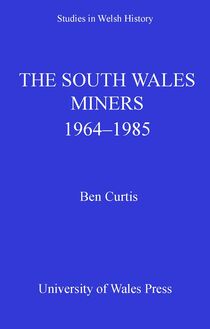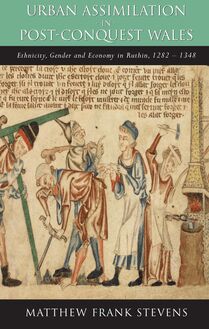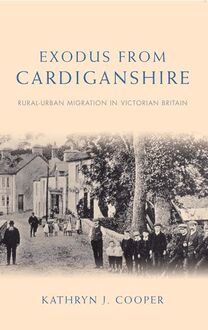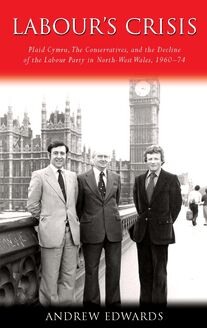-
 Univers
Univers
-
 Ebooks
Ebooks
-
 Livres audio
Livres audio
-
 Presse
Presse
-
 Podcasts
Podcasts
-
 BD
BD
-
 Documents
Documents
-
- Cours
- Révisions
- Ressources pédagogiques
- Sciences de l’éducation
- Manuels scolaires
- Langues
- Travaux de classe
- Annales de BEP
- Etudes supérieures
- Maternelle et primaire
- Fiches de lecture
- Orientation scolaire
- Méthodologie
- Corrigés de devoir
- Annales d’examens et concours
- Annales du bac
- Annales du brevet
- Rapports de stage
La lecture à portée de main
Vous pourrez modifier la taille du texte de cet ouvrage
Découvre YouScribe en t'inscrivant gratuitement
Je m'inscrisDécouvre YouScribe en t'inscrivant gratuitement
Je m'inscrisEn savoir plus
Vous pourrez modifier la taille du texte de cet ouvrage
En savoir plus

Description
I Introduction Ii ‘Prejudicial To Our Ancient Rights And Privileges’: Urban Governance, C.1780-1800 Iii ‘Many Advantages Not To Be Found In Any Other Part Of Wales’: Improvement And Identity, C.1800-1820 Iv ‘A Degree Of Commercial And Manufacturing Importance’: Industrialization And Regional Status V ‘The Content And Comfort Of The Workmen’: The Swansea Populace And Social Relations Vi’Cutting Each Other’s Throats By Our Unhappy Divisions’: Local Government In The Post-Reform Era Vii’There Is A Spirit Of Intelligence Abroad’: Urban Elites And Urban Culture Viii Conclusion
Sujets
Informations
| Publié par | University of Wales Press |
| Date de parution | 15 septembre 2019 |
| Nombre de lectures | 0 |
| EAN13 | 9781786835574 |
| Langue | English |
Informations légales : prix de location à la page 0,0824€. Cette information est donnée uniquement à titre indicatif conformément à la législation en vigueur.
Extrait
STUDIES IN WELSH HISTORY
Editors
RALPH A. GRIFFITHS CHRIS WILLIAMS ERYN M. WHITE
24
‘INTELLIGENT TOWN’
AN URBAN HISTORY OF SWANSEA, 1780–1855
‘INTELLIGENT TOWN’
AN URBAN HISTORY OF SWANSEA, 1780–1855
by
LOUISE MISKELL
Published on behalf of the History and Law Committee of the Board of Celtic Studies
© Louise Miskell, 2006
British Library Cataloguing-in-Publication Data
A catalogue record for this book is available from the British Library.
ISBN 978-0-70832-510-0
eISBN 978-1-78683-557-4
All rights reserved. No part of this book may be reproduced, stored in a retrieval system, or transmitted, in any form or by any means, electronic, mechanical, photocopying, recording or otherwise, without clearance from the University of Wales Press, King Edward VII Avenue, Cardiff, Wales, CF10 3NS. www.uwp.co.uk
The right of Louise Miskell to be identified as author of this work has been asserted by her in accordance with sections 77 and 78 of the Copyright, Designs and Patents Act 1988.
The publisher has no responsibility for the persistence or accuracy of URLs for any external or third-party internet websites referred to in this book, and does not guarantee that any content on such websites is, or will remain, accurate or appropriate.
Cover image: Panoramic view of Swansea from Mount Pleasant c.1850. By kind permission of the City and County of Swansea: Swansea Museum
EDITORS’ FOREWORD
Since the foundation of the series in 1977, the study of Wales’s history has attracted growing attention among historians internationally and continues to enjoy a vigorous popularity. Not only are approaches, both traditional and new, to the study of history in general being successfully applied in a Welsh context, but Wales’s historical experience is increasingly appreciated by writers on British, European and world history. These advances have been especially marked in the university institutions in Wales itself.
In order to make more widely available the conclusions of original research, much of it of limited accessibility in postgraduate dissertations and theses, in 1977 the History and Law Committee of the Board of Celtic Studies inaugurated this series of monographs, Studies in Welsh History . It was anticipated that many of the volumes would originate in research conducted in the University of Wales or under the auspices of the Board of Celtic Studies, and so it has proved. But the series does not exclude significant contributions made by researchers in other universities and elsewhere. Its primary aim is to serve historical scholarship and to encourage the study of Welsh history.
CONTENTS
EDITORS’ FOREWORD
PREFACE
LIST OF ILLUSTRATIONS
LIST OF TABLES AND FIGURES
ABBREVIATIONS
Introduction
I ‘Prejudicial to our ancient rights and privileges’: Urban governance, c .1780–1800
II ‘Many advantages not to be found in any other part of Wales’: Improvement and identity, c. 1800–1820
III ‘A degree of commercial and manufacturing importance’: Industrialization and regional status
IV ‘The content and comfort of the workmen’: The Swansea populace and social relations
V ‘Cutting each other’s throats by our unhappy divisions’: Local government in the post-reform era
VI ‘There is a spirit of intelligence abroad’: Urban elites and urban culture
Conclusion
Picture Section
BIOGRAPHICAL APPENDIX
BIBLIOGRAPHY
NOTES
PREFACE
The writing of this book was made possible by an innovative collaboration between the University of Wales Swansea, and the National Museums and Galleries of Wales. Beginning in September 2000, these two institutions jointly funded a research post in the department of history at Swansea. It was an initiative inspired by Swansea’s choice as the location for a new national museum charting Wales’s industrial and maritime past. As the person appointed to this new post, I was presented with an opportunity to conduct the research on which this book is based. It would not have been written without the foresight and commitment of the two chief collaborators, Dr David Jenkins, curator of the national museum’s industrial and maritime collections, and Professor Ralph Griffiths of the history department at Swansea.
My own route towards the writing of an urban history of Swansea originated much earlier. As an undergraduate at Aberystwyth in 1989, I was fortunate enough to come under the tutelage of a succession of superb historians, including Professor Rees Davies, Professor Geraint H. Jenkins, Dr John Davies and later, as a postgraduate, Dr Paul O’Leary. Along with their colleagues in the department of history and Welsh history, they provided me with encouragement and rigorous academic scrutiny whenever it was needed. In 1997 I became a research assistant at the University of Dundee where I began work on a research project that was specifically urban in focus. Professor Chris Whatley, Dr Bob Harris and Professor Charles McKean all provided invaluable guidance as I began to familiarize myself with the Scottish urban landscape and, inevitably, to draw comparisons with the history of Welsh towns. I owe my former colleagues in Dundee a tremendous debt of thanks. Their influences are clear for all to see in this book.
Since joining the department of history at Swansea in September 2000 and embarking on the research for this book, I have benefited from advice and support from numerous different quarters. My departmental colleagues, especially Professor David Howell, have been a constant source of encouragement. Staff at the university library and archives, in particular the university archivist, Elisabeth Bennett, and the history subject librarians, Dr Ian Glen and Bernadette Matthias, have been unfailingly cooperative. Staff at the West Glamorgan Archives Service, especially Kim Collis and Andrew Dulley, were extremely helpful during the months spent wading through volumes of corporation minutes. Elsewhere in Swansea, members of staff at the Glynn Vivian Art Gallery, particularly Jenni Spencer-Davies and Ellie Dawkins, and at Swansea Museum, Bernice Cardy and Bernard Morris, have given generously of their time and expertise in helping me to locate suitable illustrative material. Other Swansea experts who have kindly shared their knowledge with me include Gerald Gabb, Dr Owen Roberts and Dr Robert Anthony.
My frequent research visits to other institutions, principally the National Library of Wales and the National Archives at Kew, were made easier by the efficiency and friendliness of the staff who dealt with my queries, and I am especially grateful to Jenny Mountain at the Bank of England Archives for her interest in, and assistance with, my research. During the writing of the book, the series editors have kept an attentive eye on my progress, and I am also indebted to the generosity of Neil Evans who undertook to read and comment on an earlier draft of the text. The finished product would have been much the poorer without his observations.
My final thanks are reserved for the people who make up my personal ‘support networks’. They have, some of them unknowingly, helped me through the inevitable ups and downs of a lengthy research project. They are my family in Port Talbot, Mike and our neighbours in Aberdare, and my running friends in Swansea. I am grateful to them all.
Louise Miskell
ILLUSTRATIONS
1. Moses Harris, A Welsh Corporation Meeting , 1787 (Swansea Museum). Thomas Powell attacks Charles Collins as the Quaker, William Padley (centre, wearing his hat), looks on.
2. Paul Padley, Panorama of Swansea in the 1790s (Swansea Museum). The scale of the Cambrian Pottery can be gauged from the four large kilns visible on the left.
3. Paul Padley, Panorama of Swansea in the 1790s (Swansea Museum). Jernegan’s Countess of Huntingdon’s chapel is clearly visible in the new area of development on the Burrows.
4. G. O. Delamotte, Constable John Luce (Swansea Museum). Appointed by the paving commission in 1821 to impound stray animals found on Swansea’s streets.
5. G. O. Delamotte, untitled sketch (WGAS). This untitled sketch shows the poor condition of some of Swansea’s streets by the second decade of the nineteenth century. The street shown here, the Strand, was described by the paving commissioners in their survey of 1819 as being ‘in bad repair throughout’.
6. George Yates, extract from map of Glamorgan, 1799 (WGAS). This extract shows Swansea’s well developed urban core and spacious harbour, with good canal and road links to the surrounding district.
7. G. O. Delamotte, Caswell Bay (undated) (WGAS). This sketch of c. 1820 shows a well-dressed group of excursionists gathered near a Gower cave to view the rock and plant life of the coastline near Swansea.
8. G. O. Delamotte, Muffins or Crumpets! (NLW) Cake-seller dressed in the traditional hat, shawl and apron attire worn by female traders in early nineteenth-century Swansea.
TABLES
1.1 Occupational profile of Swansea burgesses, 1760–89
1.2 Occupational profile of Swansea burgesses, 1789–92
3.1 Annual rateable value of property in selected Glamorgan towns, 1826
4.1 Population growth in four south Wales towns, 1801–41
5.1 Occupations of Swansea burgesses, 1760–92 and 1835
5.2 Swansea’s first town council, 1836
6.1 Occupational status of RISW subscribers, 1839
6.2 Residential distribution of RISW subscribers, 1839
FIGURES
3.1 Occupations of Swansea householders, 1838
4.1 Comparison of occupations in Cardiff, Merthyr Tydfil and Swansea, 1841
ABBREVIATIONS
BAAS British Association for the Advancement of Science
BoEA Bank of England Archives
CUHB Cambridge Urban History of Britain
GCH Glamorgan County History
GGF George Grant Francis collection
GRO Glamorgan Record Office
NLW National Library of Wales
PP Parliamentary Papers
RISW Royal Institution of South Wales
SCL Swansea Central Library
TNA The National Archives
UWSA University of Wales Swansea Archives
WCR William Cyril Roge
-
 Univers
Univers
-
 Ebooks
Ebooks
-
 Livres audio
Livres audio
-
 Presse
Presse
-
 Podcasts
Podcasts
-
 BD
BD
-
 Documents
Documents
-
Jeunesse
-
Littérature
-
Ressources professionnelles
-
Santé et bien-être
-
Savoirs
-
Education
-
Loisirs et hobbies
-
Art, musique et cinéma
-
Actualité et débat de société
-
Jeunesse
-
Littérature
-
Ressources professionnelles
-
Santé et bien-être
-
Savoirs
-
Education
-
Loisirs et hobbies
-
Art, musique et cinéma
-
Actualité et débat de société
-
Actualités
-
Lifestyle
-
Presse jeunesse
-
Presse professionnelle
-
Pratique
-
Presse sportive
-
Presse internationale
-
Culture & Médias
-
Action et Aventures
-
Science-fiction et Fantasy
-
Société
-
Jeunesse
-
Littérature
-
Ressources professionnelles
-
Santé et bien-être
-
Savoirs
-
Education
-
Loisirs et hobbies
-
Art, musique et cinéma
-
Actualité et débat de société
- Cours
- Révisions
- Ressources pédagogiques
- Sciences de l’éducation
- Manuels scolaires
- Langues
- Travaux de classe
- Annales de BEP
- Etudes supérieures
- Maternelle et primaire
- Fiches de lecture
- Orientation scolaire
- Méthodologie
- Corrigés de devoir
- Annales d’examens et concours
- Annales du bac
- Annales du brevet
- Rapports de stage




















